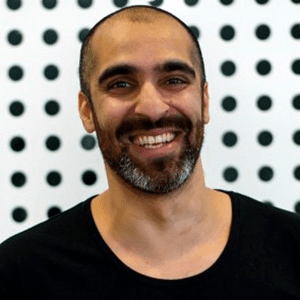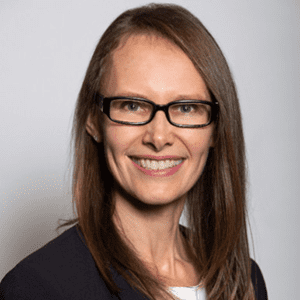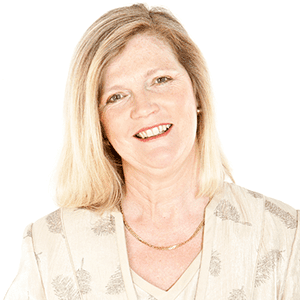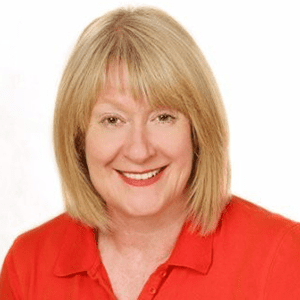

#23: Strategic planning in a mid-size business environment
Getting started is the biggest hurdle for strategic planning in mid size businesses. TEC Chair Kerry Skellern gives a practical strategic framework to help you start, create, and then execute on that strategy.
- Create your company vision
- Define your financial targets
- Develop your strategic statement
Listen to discover practical examples for each element to simplify the process.
Stephanie : Hello, and welcome to TEC Live. Stephanie Christopher here, Chief Executive of The Executive Connection. TEC connects CEOs, executives and business owners to the world’s largest business leader network.
Our guest today is Kerry Skellern, an independent business advisor and non-executive director, with over 30 years of business experience. Kerry’s worked with companies from large corporates to startups and everything in between. Kerry has significant expertise as an operational leader working in technical environments and is also an expert in change management. She’s lived and worked in China with responsibilities across Southeast Asia and greater China. Kerry , welcome to TEC Live.
Kerry : Thanks, Stephanie.
Stephanie : Good to have you here. Today we’re going to talk about business planning in real life or we can be fancy and call it strategic planning in a dynamic environment. If I’m running a midsize business or even a small business, right now I’m thinking, ‘I can’t. This is all a bit scary.’ Tell me, how have you come to this and how have you adapted everything to something that would apply to perhaps a less experienced business leader?
Kerry : Stephanie, I guess as you know, I worked for many years in large corporate environments and we certainly spent days if not weeks on this topic. And I think often it became an end in itself and certainly for midsize businesses, that’s not time that they have available to them. Essentially what I’ve done over time is really developed a very simple framework around business planning that… We only need a few hours just to really get the leadership team of the business to step out of the day to day for short period of time, put their heads together and think at a high level about where the business is going.
Stephanie : You referred to the corporate way of doing it and I’ve sat in rooms too, but all the lead up to it, all the data and everything. Can you talk just a little bit briefly about what the kind of Rolls Royce version of business planning or strategic planning looks like?
Kerry : I guess just in terms of the overall framework, I think a business does need to start from what’s their vision? So what do they really want to look like as a business? What’s important to them? And it can be a little bit jargonistic, but I still think as a group, there’s enormous power in sitting around a table and really debating that. It’s not something that changes a lot from year to year. So once it’s in place, it’s just something you can revisit probably on an annual basis. Then I think a business needs to think about financially what are their targets? So who are the stakeholders for those financial targets? Make sure they’re all aligned, whatever that might be.
Stephanie : And so it might be shareholders or the bank?
Kerry : Correct. Absolutely.
Stephanie : Or your family?
Kerry : Yes. And I think consulting with all of the above. So when you put that target together, it’s shared and owned by all those stakeholders. And it’s then clear to the leadership group what their remit is.
Then I think the business needs to think about their strategy, which is really just quite simply how do they want to go about working towards delivering that financial target and working towards their vision. It’s a short statement of how they’re going to achieve that.
Stephanie : Tell me about what kind of short statement would that be? What does that look like?
Kerry : It could be something about what position do they want to take in the market? What’s important to them? Do they want to be a quality supplier? Do they want to be a fast mover? Do they have a particular capability that they want to exploit that they think is a point of difference to others in the market?
Stephanie : What would be an example of that? A particular capability? What could be an example?
Kerry : It could be, for example, if someone does have manufacturing in Australia and there are still a lot of organisations that do. They may have a manufacturing capability that they need to run a maximum capacity possible and that will be a key driver in terms of how much business they seek to bring in the door. By contrast, a distribution business, customer service is highly likely to be a really key thing for them and that is potentially something that they would have defined at a strategic level.
Stephanie : Often when you look at someone else’s strategic plan or they’re talking about it, they might say something that doesn’t really differentiate them from other companies. So to be the number one provider of X, or to… What separates you from others? Our customer service. How can you make sure when you’re doing business planning or strategic process that what you’re saying you’re going to do differentiates you from others in the same field?
Kerry : Perhaps the best way to illustrate that one is with an example. Certainly one organization that I work with, they certainly have customer service in their strategy statement. Then what they’ve done is developed something called a customer service promise. So they actually outline at a very specific level what they’re looking to achieve with their customers. What times of the day will they answer the phones, how late can customers call in each day to get a next day delivery? So it’s really very, very tactical. That drives how they work in the business and then their way of measuring that. I’ve got a couple things I do, but it’s to get feedback from customers obviously. So the sales people go out and ask questions around each component of the customer service promise. And they also actually run a tracker on issues and once a month they sit down and look at the issues list and identify what kind of actions need to be taken. I guess that’s a way that a strategic statement can really cascade down to action.
Stephanie : And so measurement’s a big part of that isn’t it?
Kerry : Absolutely.
Stephanie : And tracking.
Kerry : Yeah. And sometimes, particularly around topics like customer service, that’s not easy. So I think businesses constantly strive to improve in that area, but as long as it’s front of mind, you’ve got some measurement approaches that you’re trying, then I think giving it a go and having the dialogue puts you often a big step ahead of the competition.
Stephanie : That’s good. You’ve talked about a vision, some financial targets, and a strategic statement. What else? What’s next?
Kerry : Under that broad business strategy statement, I encourage businesses to think about two key areas underneath that. The first one is what are they trying to achieve in terms of their market? What kinds of things, what kind of market segments are they targeting? And certainly, Stephanie, in corporate world and we spend an awful lot of time-
Stephanie : On market segments?
Kerry : Yes. Analysing endless detail. I think for midsize businesses, even having your head around the different parts of your market and understanding who they are, what their different needs are at a really simple level is incredibly powerful.
Stephanie : So getting really specific, give an example of a market segment. If I’m a manufacturing business, what could be the different market segments that I might be looking at?
Kerry : If I think of, for example, a building materials manufacturing business, depending how you structure your segments, you could be looking at builders and you might be breaking them down into first-home builders, custom home builders, renovators. Each of those segments will then have slightly different needs and that’s actually what defines a segment. If you look at groups of people and think their needs are the same, well then as a business, you can essentially treat them the same way.
Stephanie : So it’s about different groups of customers with different needs.
Kerry : Correct.
Stephanie : And so as a business, I’m going to sell to them differently, deliver services to them differently, keep them happy differently.
Kerry : Yes. So the risk of using a bit of jargon, your value proposition to them will be different.
Stephanie : Right. Okay.
Kerry : The way that you approach each of them in terms of your products, how your sales team might interact with them, how any other parts of the business might interact with them is likely to be slightly different from segment to segment.
Stephanie : Right. Okay. Just skipping back to a corporate or a traditional way of doing business planning and with all the steps involved, can you do this in a short time than if you’re looking at it from a midsize business? If a big company’s going to take days or weeks or months even to get this right, how can you contract all of that into half a day?
Kerry : If a midsize business is doing this for the very first time, and even on an ongoing basis, there is likely to be a bit of pre-work around that. I think a couple of things you could source a market research report as a guide to what particularly trends in the market. I often find with mid-sized businesses overanalysing the size of the market and the size of the segments is not particularly helpful, but understanding the trends and what’s happening can really help inform you as to the actions you should take.
Stephanie : What’s the difference? What would be the difference then?
Kerry : Well, I think the analysis piece can lead you down a path of trying to quantify really carefully where you are in the market, what your position is. I think often with mid-sized businesses there are a lot of them in the market and if you’ve already defined your financial target, then you’ve got a clear idea of where you want to go. If you understand broadly the trends, that should help inform you as to whether that’s likely to be achievable.
Stephanie : That’s really interesting. What kind of trends would you be looking for? I guess whether offshoring or what sort of things would you be looking for?
Kerry : Offshoring, I think what’s happening in terms of investment in the sectors into which you sell. In Australia at the moment for example, there’s a lot of infrastructure investment going on, so that can be certainly a trend, how long that’s likely to last for. So you’re looking from some really quite macro market data that’s generally pretty freely available without having to spend a whole lot of money, which is also important. You could be looking at are you seeing new competitors coming into the market? Often when a market is strong, a lot of people get interested and you tend to attract a few more in. And again, that can inform you in terms of thinking about your competitive position and making sure you continue to set yourself apart.
Stephanie : If I make this plan and I’ve got a certain set of resources in my business. I’ve got the people that I’ve got, I’ve got the way I operate, this plan might take me to the next level. And then the next thing would be to really look at what resources I’d need to put the plan in place, wouldn’t it?
Kerry : Yes. The terminology I use for that, Stephanie, is what are the enabling strategies or what are the enabling objectives or projects that you’d need to put in place? And essentially that’s all about at that point, looking internally within the business. We’ve looked at the market, we’ve looked at what value we’re trying to create, now it’s about what capabilities do we have in place and what are we going to need into the future? And that’s everything. Sales, marketing, IT. So at least understanding some trends around technology as they impact your business and where you think they’re going. When you put that together with thinking about the market, then you’ve really got a good overview of where you want to be with your customers and then what you need internally to deliver on that.
Stephanie : How hard do you think it is for a business owner or a hired CEO of a mid-level business to do this work, this strategic work, and actually execute on it rather than get back to business as usual and go, ‘Well, that was good and great time with Kerry. She’s strategic, but I’ve got a business to run.’ How hard is it for business leaders to make that shift?
Kerry : It’s tough, Stephanie. I mean, you need to be completely realistic about that. Mid-size businesses are always busy and there’s a lot going on.
I guess one of the approaches that I use with businesses that I work with is to take all the strategy stuff that we’ve talked about and to bring that down to some sort of 30, 60, and 90-day plans. And then put a team around that a cross functional team from across the business and ideally once a month get them together for a quick meeting. Again, it doesn’t need to be hours and hours on end. And what I found is by really narrowing the focus, it helps you break down those big projects into achievable chunks, if you like. That that really helps the team get a sense of achievement and get things done.
Stephanie : Yeah, it’s the achievable chunks, isn’t it? Because if it’s a leadership team or whatever who are doing this strategic planning, but the people who are actually on the front line delivering the product are left with the execution, it can be a real trap can’t it?
Kerry : Yes, and I think where I’ve seen the 30, 60, 90-day approach be particularly successful is where we’ve actually gone beyond the leadership team in putting that group together, that meets to work on the projects. Because it does… Well, it does a few things. It provides them with a development opportunity because they’re really getting involved in the areas that are going to be important to the future of the business and if you’ve done the other components of the process the right way that they should be able to see how it all connects as well. But clearly also, it gives them a sense of ownership and involvement around these key tasks and really rather than the leadership team potentially retreating to the room once a month and nobody knows what’s going on, you bring in a much broader group. And even in a mid-size business, I think that, or even more so in a mid-size business, that’s very important.
Stephanie : What’s the biggest challenge do you think, for mid-size businesses to be able to actually execute on the strategy? What’s the biggest challenge?
Kerry : I think it may be actually what we just touched on. I think it’s allowing the time to work on the business, not in the business typically because they are relatively small teams. You only need a couple of people sick or on leave and then it’s all hands on deck just to meet the customer’s needs for that day. So I think that’s part of the power of really bringing these objectives down to small tasks so that people rather than trying to tackle a whole lot, we really bring it down to some quite simple tasks. I’ll give you an example, Stephanie. Often businesses are working on building whole new sets of procedures around a particular aspect of the business, whatever that might be. That can be a really large looking task and probably a bit dry to a lot of people. If you just pick one of those or in a particular area, pick one as your 30-day target say even for example, workplace health and safety. In the next 30 days, we’re going to pick one procedure that tackles the highest risk that worries us in the business at the moment. Tackle a procedure, pilot any element of that that you need to, communicate it to the teams. Then all of a sudden you can tick a box that you’ve actually achieved something connected to your business strategy, but now way down in the detailed implementation.
Stephanie : That’s good. What I like about that is something where I’ve seen it really work well in the past is when business as usual actually is about executing on the strategy.
Kerry : Yes.
Stephanie : That they’re not two separate things. There’s this strategy thing and well then I’ve got to really do my job now, but actually is the same thing.
Kerry : Yes.
Stephanie : I’m interested, you said 30, 60, 90 days and I was thinking about this conversation coming up. I was thinking about my dad, and it must have been the late ’70s, when in a major global corporate he took on a role of five-year plans. I remember we used to hear a lot, ‘Well, it’s the five year plan. I’m doing a five-year plan.’ That seems kind of laughable now. Who would even know five years out from here. What’s the time frame normally now for business planning.
Kerry : Look, I think it is getting shorter, but having said that, certainly the environment is much more dynamic than it was a generation ago.
Stephanie : Yes, of course.
Kerry : I still think there’s value in businesses almost thinking about a time horizon that is so far away from now that they don’t feel as though they have to get there in one step, if that makes sense.
Stephanie : Okay, tell me more about that.
Kerry : If you’re thinking about even five years, 10 years, 20 years, depending on the business, sometimes I think it can really open up their thinking to look further out, particularly for operational people and I’m probably one of those. Sometimes you feel as though you’ve got to be able to chart every step of the way to get there. But by taking off the blinkers, thinking further away, you can generate some really innovative thinking about what the business might be in the future. So I personally still believe there’s a lot of value in having a longer term time horizon on your strategic planning, and then you bring that back to what you’re actually going to execute in the next 12 to 18 months.
Stephanie : And then that’s the 30, 60, 90-day sprints, I guess.
Kerry : Yes, that’s right. That’s right.
Stephanie : The thing I like about that as well is you could have a reset. If you don’t hit the quarter and you’ve got a plan for the next 30, 60, 90 days, you’ve got another shot at it.
Kerry : Yes, that’s right. I think the reset is very valuable. It causes you to reflect on a couple of things. With some projects you get to a point where actually it’s pretty much done and you might say that it’s now business as usual and you can say, ‘Well, we don’t need that to come to this meeting anymore because it’s happening and we’ll track that through other processes that are in place in the business.’ On the other hand, you might look at a project and go, ‘We are really off track here and yet this is still important to the business. Why are we off track? And that sort of quarterly reset helps trigger that discussion.
Stephanie : What’s the big way you would think business leaders trip up the most in this process?
Kerry : I think getting started might be the biggest one.
Stephanie : Well, we talked about it, didn’t we? Where we’re saying that if you’re a big corporate you have a mental block because you think, ‘Oh it’s that time again. It’s going to be days and days and days and months and months.’ But if you’ve never done it before or you’ve done it and haven’t executed it, you can have a real mental block for this, couldn’t you?
Kerry : Yeah, quite easily. And I think sometimes strategic planning looks like another language you need to learn. And so a big part of what I have tried to do with mid-size businesses is really simplify it. So to minimise the amount of jargon so people really feel they’re connected to what we’re talking about and it’s real. It’s not just something that we go and sit in a room and do. So I do think getting started and may be businesses need someone just to help them with that just to get going, and then they may build enough skills in-house that they feel comfortable to keep that going or they may want to check in with someone externally once a quarter, once a year, whatever that might be.
Stephanie : One of the other things that I think is tough about this kind of process, especially when you’re in a midsize business, is you talked about the enabling strategies. That you may well come up with a whole lot around talent around people and you said something about, well, if I’m going after this segment, I might need a whole different marketing and sales approach. That’s going to need people that I may well not have now. And so if I’ve got a 30, 60, 90-day action plan on this, I better not be able to get a person for six months. How do you manage that? How do you do it without stopping and saying, ‘Well, I can’t do anything till I hire this dream salesperson,’ or whatever?
Kerry : Yeah. I think, again, it’s within the existing team. Is trying to just move forward on some small tasks in that direction. For example, if you might be operating in an environment where you decide that you need a sales team, so they may have, traditionally the business might’ve just come to them and now they’ve got a hunt more, so they need to be better at cold calling and all those skills that can be quite challenging to a team that just hasn’t had to do it before. So there may be ways of just getting the existing team working with them to understand that, ‘Yes, we get that it’s challenging. So let’s agree if we’re going to do certain number of calls a week, certain number of calls a day, let’s just give it a go.’ Meantime, you can be out there searching for perhaps someone who’s much deeper in that skillset that can then grow the business further into the future.
Stephanie : Okay, so you’ve still got the vision and you’re still sharing the strategy with the team and you’re working towards it. You don’t hold everything until you get that person.
Kerry : No, definitely not. No. I think once you’ve done all that homework to say, ‘Yeah, we know where we want to go here.’ You look with the current team at what can we do with what we’ve got, and meanwhile… Because I guess we’re setting these objectives, although I’ve talked about 30, 60, 90 days, potentially we’re setting objectives that are sort of one to two years in terms of their full delivery. Recruitment obviously sometimes can take quite a while, so I think you bring it back to some smaller tasks that the existing team can take on.
Stephanie : What about changing course midstream? If something significant happens that you lose your biggest customer, you gain your biggest customer, some government regulation comes in that you weren’t expecting, some global factors happen that you weren’t expecting. I mean, well obviously with the devastation recently in Australia. No business is planned for that. But perhaps without being as extreme, how do you change course? If you’ve got a two-year plan, what do you do?
Kerry : To be honest, I think that’s the real power of strategic planning. Is if you don’t have the framework, you actually can’t identify when there has been one of those events. So I think obviously you need to recast and if you have a view on where you think the business is going based on certain assumptions and then all of a sudden someone comes in and says, hold on, such and such has happened. And often that is the sales team, but not always. I think then you’re in a position to get the team together in a mid-sized business if they have some structure around their monthly meetings or whatever it might be. They can actually say, ‘This has changed. Here’s the plan and now this has happened.’ And I think by having the plan in the first place, you’re in a much stronger position-
Stephanie : To respond.
Kerry : Absolutely. I think there’s been an argument now in a much more dynamic environment. Maybe you don’t need to do longer term strategic plans, but I actually think it’s even more useful now than before provided you make sure you invest the amount of time in that that suits your business.
Stephanie : What are the biggest factors affecting mid-size business at the moment do you think?
Kerry : I think the economy in Australia is challenging. It seems to be, and obviously we have experts on this, but it seems to be a little bit of a patchwork. I think mid-sized businesses have to really understand what’s happening in their part of the economy. There are parts that are absolutely booming and clearly there are others that are really struggling. I think really starting from that big picture and understanding what’s happening and then bringing that down to their business to make sure that whatever decisions they’re making at work in that framework. So if there is a massive growth opportunity, ‘Then let’s go with it and let’s invest in whatever we need.’ But the flip side of that is, ‘If there are some real challenges out there, let’s make sure we’ve got our costs under control and let’s work out how we’re going to ride it out.’
Stephanie : Okay, so the patchy economy, what else would you say?
Kerry : I think getting good talent. I consistently hear is a challenge. So really finding good people for the business and then I think because it’s hard to find them in the first place, then you really need to look after them. Keep them engaged to keep developing them. And that doesn’t mean you have to send them away on incredibly expensive training courses, but you keep challenging them in their roles and often by far the majority of that is on the job.
Stephanie : I liked what you said about including people as a development experience into perhaps something they wouldn’t have exposure to.
Kerry : Yes.
Stephanie : Say I’m a mid-size business owner and I’m inspired to embrace this and I’m going to develop a plan for the next two years, but with some really good milestones along the way, I get the idea of potentially someone from outside, but who do I engage internally? Where should I start with my team to be involved in this?
Kerry : I think all members of the leadership team need to be involved depending on the business structure. But if there’s a business owner who’s quite closely involved in the business, the general manager or the day-to-day leader of the business and then his or her direct reports. So often there’s a finance person. I think if you don’t have a finance person in the team, then perhaps whoever covers that role for the business should be involved. Sales and marketing, whoever’s wearing the HR hat, which is often one of those people already anyway. So I guess really having… In a corporate world it’d be a cross-functional team. So really having all the key business functions represented and often in a mid-size business, that’s a relatively small number of people and having that group come together is key.
Stephanie : That’s the place to start.
Kerry : Yeah.
Stephanie : Okay. Now, a final question for you. How was it making the shift from the corporate world to more of the mid-size business landscape?
Kerry : I’ve actually found it incredibly fulfilling. I feel as though you can make more of a difference in mid-sized businesses. I think in a big corporate environment, typically you have a lot of support and a lot of resource and a lot of processes, but sometimes it can be more difficult to feel as though you’ve had an impact. Where I felt as though with mid-size businesses just as I’ve done with these planning processes, you can really pare them back to what makes a difference and focus on that. So that’s been very rewarding for me.
Stephanie : I really like that idea of it’s about making a difference and it’s making a difference to the business. But I can see Kerry, by the way, that you’re working with business owners, you’re making a difference to them as well as a leader and as someone who’s comfortable with taking the next step in the way that they’re running a business. I think that’s been a great once around, a strategic framework. And thank you for making it so practical. Kerry , thank you very much.
Kerry : Thanks, Stephanie.
Stephanie : That’s TEC Live for today. CEOs are in the business of making decisions and leadership as the art of execution. I’m Stephanie Christopher and look forward to talking to you next time.



